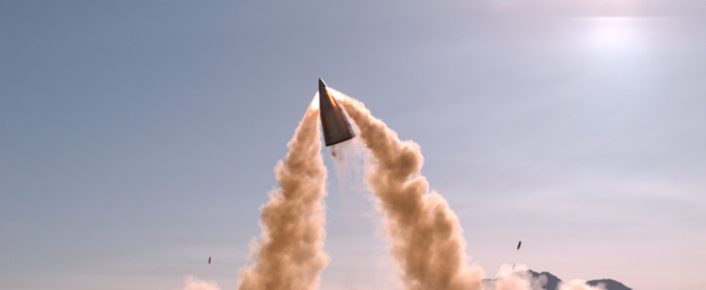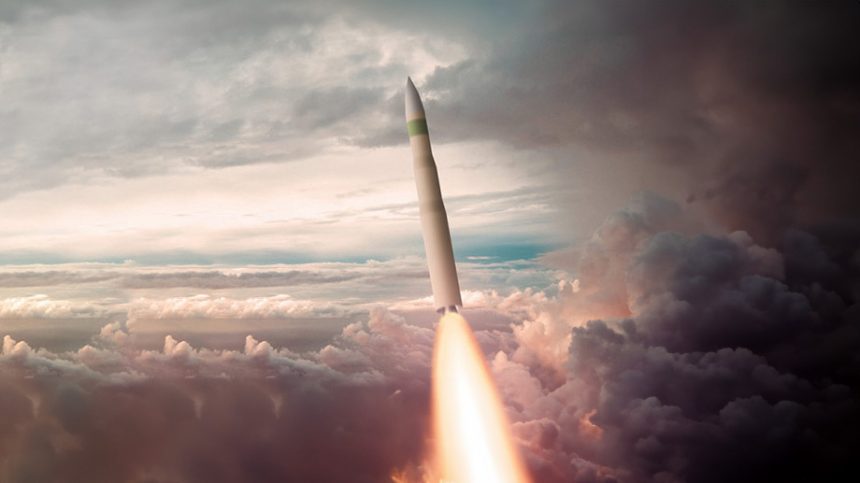Experts say pursuing a Minuteman III life-extension until 2050 would cost significantly less than its replacement.
The Pentagon’s continuation of the LGM-35A Sentinel ICBM (Inter-Continental Ballistic Missile) program, after it triggered the Nunn-McCurdy breach, marks a turning point in American defense planning while it is also managing other big-ticket weapons programs. The Sentinel program is now under review after it reported a cost escalation of 81% over the budget, resulting in it being now priced at nearly $140 billion.
Envisaged to maintain the nuclear ‘triad’ of air, land and sea-delivered nuclear weapons, the primary goal of Sentinel was to replace the nearly 400 half-a-century old LGM-30G Minuteman III ICBMs which defense officials said could not be maintained, repaired and upgraded. However, experts say that the Pentagon’s timeline of having a new land-based leg for a nuclear launch capability through 2075 entails more cost. A timeline of 2050 or even 2100 would make it financially more feasible.
A review under the Nunn-McCurdy Act entails cancellation of the program if the cost increases by 25% or more, until the Secretary of Defense reviews the project and decides to continue it. A major driver of the price hike was the extensive and unforeseen new land-based infrastructure to operate the Sentinel ICBM. This includes new silos, command and control facilities, maintenance equipment, communications, electronics and cabling systems.
The Aviationist recently reported how the Sentinel and Russia’s Yars ICBMs represented different nuclear postures and doctrines of the two countries. This was amid the backdrop of USAF firing the head of the program for “not following organizational procedures.”

A question of timelines
According to a Mar. 2021 study by Matt Korda of the FAS (Federation of American Scientists), officials should “consider how the cost comparison between a Minuteman III life-extension and the brand-new GBSD would have changed if the Pentagon had selected a timeline of 2050 – or even 2100 – instead of 2075.” “If the Pentagon sought to compare the relative costs between these options with the intent of retaining an ICBM capability until 2050, the results would look quite different,” he added. With a different timeline, the estimated Sentinel GBSD price tag, which at the time of launch was $95.8 billion, would remain the same, however, “pursuing a Minuteman III life-extension until 2050 would cost significantly less,” said Korda.
This is also because in 2012, after the completion of a comprehensive round of Minuteman III life-extension programs, the USAF itself said that it cost only $7 billion to turn the 450 missiles into “basically new missiles except for the shell.” The program refurbished, replaced and upgraded the Minuteman III’s flight controls and propellant in all three stages, the guidance system, the Propulsion System Rocket Engine, and ground systems like electronic, cryptographic and security systems.
Moreover, the USAF’s 2075 cost assessment for the GBSD already includes the cost of a life-extension program. Thus, the Air Force might have to pursue “a follow-on system to replace the GBSD before 2100, at similarly exorbitant costs,” adds the report. Instead, if the USAF life-extends the Minuteman III until 2050 and then deploys the GBSD, it can maintain “current force levels through 2100 without acquiring a follow-on system for the GBSD.”
U.S. ICBM test just failed.
An unarmed USAF Minuteman III ICBM has been “safely terminated over Pacific Ocean at 12:06 a.m. due to an anomaly during a test launch from Vandenberg Space Force Base, California.” pic.twitter.com/IKLsO39VUD
— Clash Report (@clashreport) November 1, 2023
The report also adds that the setting of the 2075 timeline is “relatively arbitrary” and has not been “codified” into formal documents like the NPR (Nuclear Posture Review). Korda concludes that this “particular benchmark was selected in order to ensure a favorable outcome for the GBSD.”
Another earlier study in Jan. 2021 by George Perkovich and Pranay Vaddi said the “straight-line requirement projected all the way to 2075 practically predetermines the outcome.” “A more appropriate study would consider how long and at what cost Minuteman III could be extended under several scenarios,” they added. “There is no inalterable security imperative behind the number 400 and the year 2075.”
‘Maintenance is a pain’
However, US military officials have argued that, while the maintenance might be financially feasible, it is technically painstaking given the vintage and obsolete 50-year-old systems. In Jan. 2021, then head of the STRATCOM (Strategic Command), Admiral Charles Richard, said that many of the technical drawings and documentation needed to support workable repairs don’t exist anymore.
Where the drawings do exist, “they’re like six generations behind the industry standard,” he said, adding that there are also no technicians who fully understand them. “They’re not alive anymore.” The documentation pertains to electrical, electronic circuitry, cabling and other components and assemblies.
With new GBSD missiles built by Northrop Grumman, “we will replace a 60-year-old, basically circuit switch system with a modern, cyber-defendable command and control system,” Richard explained. But Mackenzie Knight, a Senior Research Associate at FAS, reasons that the poor maintainability of the Minuteman missiles doesn’t explain the exorbitantly high cost for the Sentinel ICBM that the leadership is willing to undertake.
Moreover, Knight told The Aviationist that USAF and Northrop officials themselves said they “would be compelled to extend the life of some of Minuteman missiles in light of the delay.” Even in the DoD’s press release of the Nunn-McCurdy decision, Assistant Secretary of the Air Force for Acquisition, Technology, and Logistics Andrew Hunter stated, “We’ll do what it takes to sustain Minuteman III to meet these warfighter requirements in the interim.”
A July 10 press release from the DoD also saw the Under Secretary of Defense for Acquisition and Production, William A. LaPlante admitting the cost escalation and announcing “restructuring” the program and “appropriate management” to prevent further increases. While LaPlante said there are “reasons, but no excuses” for the cost growth, there are also “risks…of not modernizing our nuclear forces and of not addressing the very real threats.” USAF Vice Chief of Staff General Jim Slife named the People’s Republic of China as a major nuclear armed power and strategic competitor.
The AFGSC (Air Force Global Strike Command) however continues launching the Minuteman III periodically, with two back-to-back tests taking place on Jun. 4 and Jun. 6, 2024 from Vandenberg Space Force Base in California. A statement from the AFGSC at the time said such tests have been conducted “over 300 times before” and the test was one of the periodic launches to verify the ICBM’s capabilities.
Moreover, as other analysts have argued, nearly 70% of the US’s deployed nuclear weapons are on nuclear-powered ballistic missile submarines (SSBNs) and B-52 and B-2 strategic bombers deployed around the world. These can both survive a nuclear strike for a retaliatory attack and can also deliver a first strike.
Lastly, some members of Congress have also suggested alternatives like developing road-mobile TELs (Tele-Erector Launcher) for firing ICBMs, a capability the US military does not have.
Conclusion
The Air Force persisting with Sentinel, from a geopolitical perspective, has the potential to trigger a new arms race to preserve deterrence, with both Russia and China currently undertaking modernization of their own nuclear arsenals.
Secondly, the massive costs of the Sentinel might also impact other key weapons programs like the B-21 Raider – which too has got costly – or the NGAD (Next Generation Air Dominance) 6th generation fighter aircraft. “How the need to pay for Sentinel’s nearly doubled price tag will factor into all this and how non-nuclear programs in particular might be affected remains to be seen,” said a report from The War Zone.









